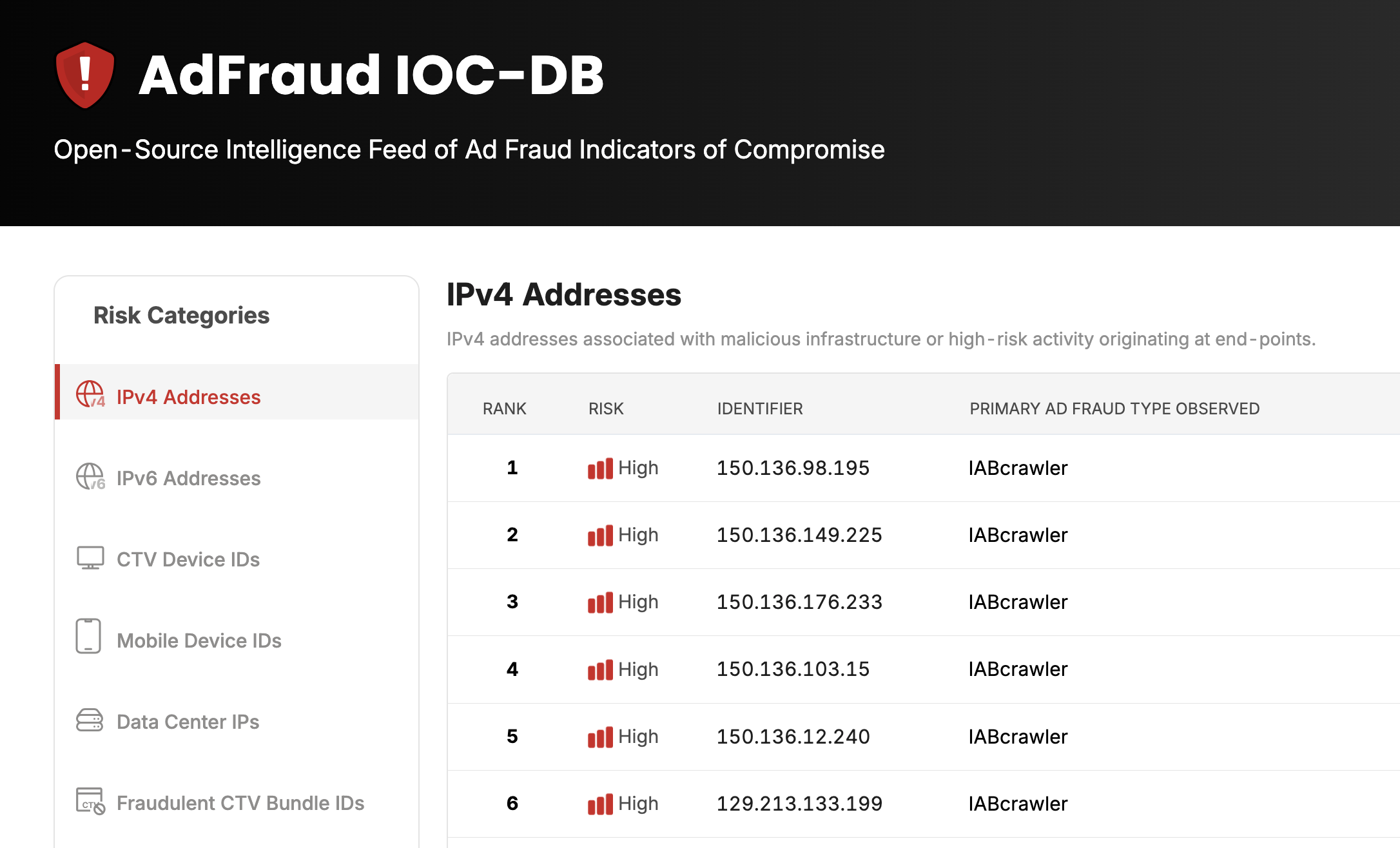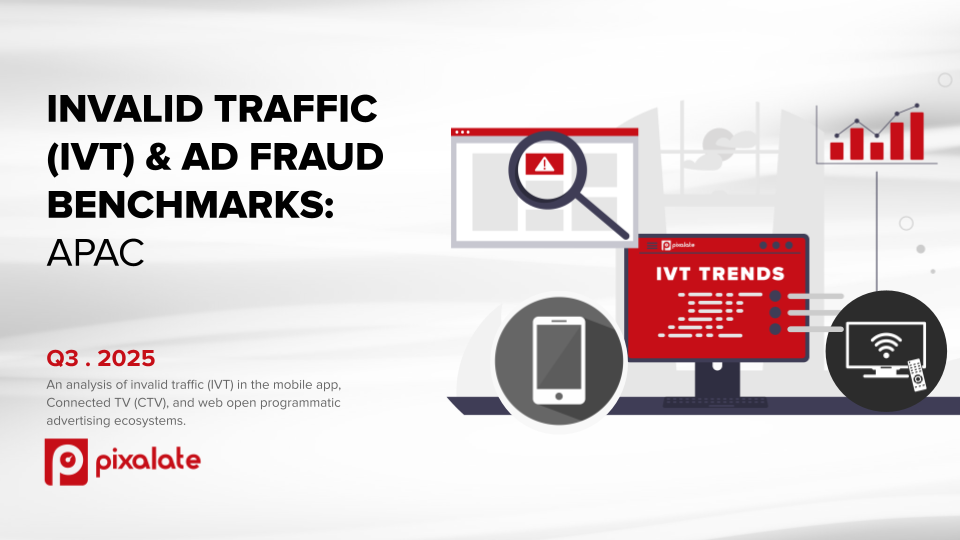Pixalate's data science team analyzed 450k+ domains and subdomains, 5+ million CTV and mobile apps, and 72+ billion global open programmatic advertising impressions in Q1 2024 to compile this global research spanning North America, EMEA, APAC, and LATAM.
LONDON, May 22, 2024 -- Pixalate, the global market-leading ad fraud protection, privacy, and compliance analytics platform, today released the Q1 2024 Ad Fraud Benchmark Reports by Global Region, analyzing the invalid traffic (IVT, including ad fraud) rates for open programmatic advertising across websites, Connected TV (CTV) apps, and mobile apps in Q1 2024.
Pixalate released North America, Latin America (LATAM), Asia-Pacific (APAC), and Europe, Middle-East and Africa (EMEA) versions of the report.
Pixalate's data science team analyzed 450k+ domains and subdomains, 5+ million CTV and mobile apps, and 72+ billion global open programmatic advertising impressions in Q1 2024 to compile this research.
Regional Key Findings:
North America
- Mobile app traffic had the highest IVT rate (20%), followed by mobile web (15%)
- CTV IVT rate decreased from 15% in Q4 2023 to 12% in Q1 2024
- Mobile web open programmatic traffic in North America had a 50% higher IVT rate (15%) than the global average (10%)
- Amazon Fire TV apps had the highest CTV IVT risk (31%), followed by Apple TV (13%)
Latin America (LATAM)
- Mobile app traffic had the highest IVT rate (20%) but remained lower than the global mobile app average (23%)
- CTV IVT rate declined from 21% in Q4 2023 to 16% in Q1 2024.
- Apple App Store apps had a 10% higher IVT risk than Google Play Store apps
- Apple TV apps had the highest CTV IVT risk (48%), followed by Amazon Fire TV (41%)
Asia-Pacific (APAC)
- Mobile app traffic had the highest IVT rate (30%) in the world
- CTV IVT risk increased from 26% in Q4 2023 to 29% in Q1 2024
- Desktop web IVT risk dipped to 11% in Q1 2024 from 12% in Q4 2023
- Amazon Fire TV apps had the highest CTV IVT risk (42%), followed by Apple TV (23%)
Europe, the Middle East and Africa (EMEA)
- Mobile app traffic had an IVT rate of 19%, lowest among all global regions
- CTV traffic had an IVT rate of 30%, the highest in the world
- Apple TV apps had the highest CTV IVT risk (35%), followed by Samsung Smart TV (17%)
Download all of Pixalate’s Ad Fraud Benchmarks Reports
About Pixalate
Pixalate is a global market-leading ad fraud protection, privacy, and compliance analytics platform. Pixalate works 24/7 to guard your reputation and grow your media value by offering the only system of coordinated solutions across display, app, video, and CTV for the detection and elimination of ad fraud. Pixalate is an MRC-accredited service for the detection and filtration of sophisticated invalid traffic (SIVT) across desktop and mobile web, mobile in-app, and CTV advertising. www.pixalate.com
Disclaimer
The content of this press release, and the Q1 2024 Desktop and Mobile Web Invalid Traffic Benchmarks Report (the "Report"), reflect Pixalate's opinions with respect to factors that Pixalate believes can be useful to the digital media industry. Any data shared is grounded in Pixalate’s proprietary technology and analytics, which Pixalate is continuously evaluating and updating. Any references to outside sources should not be construed as endorsements. Pixalate’s opinions are just that, opinions, which means that they are neither facts nor guarantees. Pixalate is sharing this data not to impugn the standing or reputation of any entity, person or app, but, instead, to report findings and trends pertaining to programmatic advertising activity in the time period studied. Pixalate does not independently verify third-party information. Per the Media Rating Council (MRC), “‘Invalid Traffic’ is defined generally as traffic that does not meet certain ad serving quality or completeness criteria, or otherwise does not represent legitimate ad traffic that should be included in measurement counts. Among the reasons why ad traffic may be deemed invalid is it is a result of non-human traffic (spiders, bots, etc.), or activity designed to produce fraudulent traffic.” IVT is also sometimes referred to as “ad fraud.” Per the MRC, “'Fraud' is not intended to represent fraud as defined in various laws, statutes and ordinances or as conventionally used in U.S. Court or other legal proceedings, but rather a custom definition strictly for advertising measurement purposes.”






